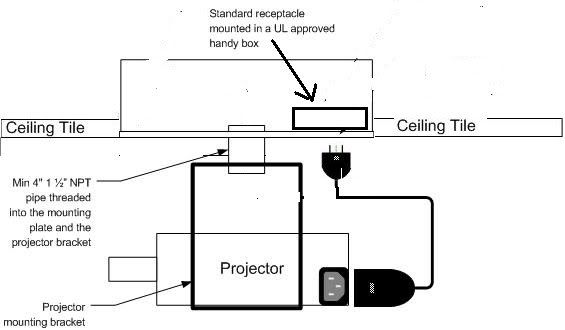- Location
- Massachusetts
e57 said:What separates those for the suggested installation of your projector mount is the plenum, and and accessibility
Mark, IMO the plenum issue has little to do with it as the NEC is written for all applications and in my area not all areas above suspended ceilings are used for air handling. Also 300.22 directly addresses wiring methods in air handling spaces.
My only point in this thread has been pointing out the code sections as they relate to the OPs drawing. Personally I do not see a safety issue as the projector will be replaced long before the cord becomes compromised.
IMHO a code change should be made to clearly allow the type of installation proposed by the OP. :smile:




